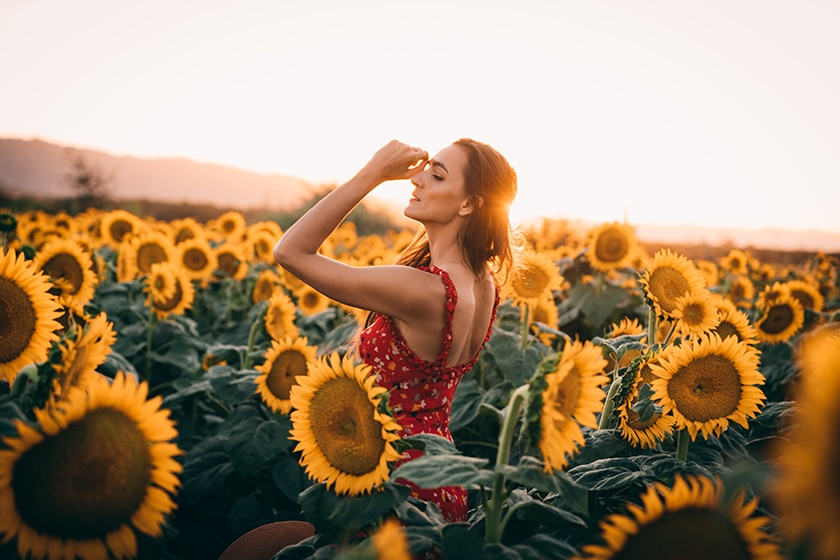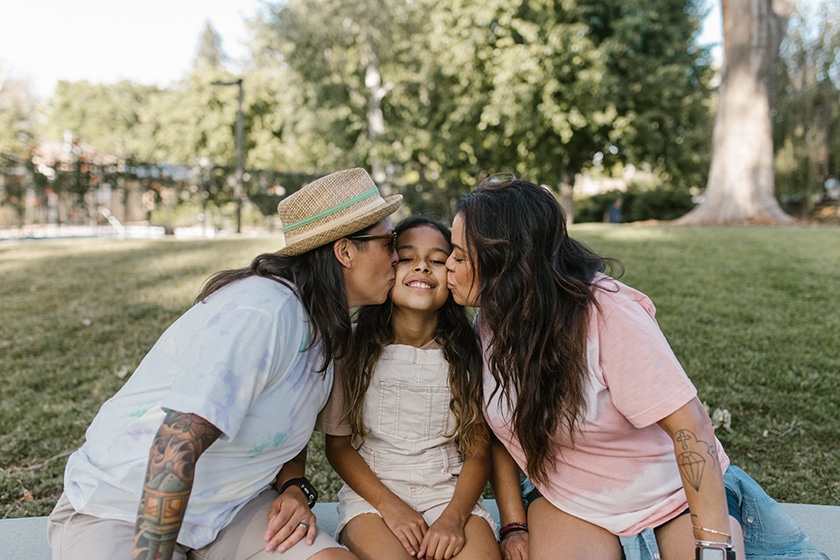The photographer’s guide to mini sessions: Booking, pricing, and creative themes.
September 23rd, 2025
Photo credit: Brooke Cadett
Mini sessions can help you make the most of your valuable time and help turn a good year for your business into a great year. For newer photographers starting out, mini sessions can be an effective way to quickly build your photography portfolio and attract new clients. Experienced photographers can benefit from repeat bookings with regular clients and expanding their client base–the lower price can tempt potential clients who want to test the waters before booking a full price session.
What small business owner doesn’t want to see big benefits from small chunks of their time? Trick question; we all want that. In this blog, we’ll walk you through how to get started offering photography mini sessions as an intentional part of your business plan.
What are photography mini sessions?
A mini session is just like the name suggests–a shorter version of a traditional session, designed to make the most of your set-up time with back-to-back clients. Mini sessions can be as short as 5 minutes, although outdoor mini sessions tend to be more like 10-20 minutes per client.
These shorter timeframes work best for individuals (monthly headshot minis, anyone?), pets, and small family groups. Minis are perfect for seasonal themes like Santa or Christmas tree sessions, Valentine’s day, Mother’s and Father’s day, or any creative idea throughout the year that your clients might enjoy.
You can offer these shorter session times by streamlining resources; use the same set, lighting, and props for each session whether shooting in studio, on location, or in an outdoor setting. The key to making a mini session successful is having a process to get ‘em in and get ‘em out quickly while still providing an unforgettable client experience.
A few important factors will be covered in more detail below, including how to market mini session dates, creating a package price or add-on incentive, and tips to expedite your booking flow.
Why offer mini sessions?
Mini sessions are a good idea for basically every photographer looking for ways to expand their clientele and make more money. Here are a few of the most compelling reasons to add them to your business plan:
- Pricing that benefits you AND your clients: You can offer mini sessions for $50 or $100, or even more! This may seem like a given, but yes–you should always charge less than a standard photo session. Follow the best practices of pricing and be sure that the price point and deliverables (number of digital files and/or prints) you choose is something that you can deliver on and still make a profit. and/or prints) you choose is something that you can deliver on and still make a profit.
- Build up your portfolio: Mini sessions are a great way to help you start out in your photography business. If you’re new in the industry or getting into a new specialty, they are an easy way to build up your portfolio. Then add the best of the images to your website and social media channels, and create buzz about what you can do for clients.
- Bring in new clients: Mini sessions can also help you get new clients in the door. And for established photographers, the lower price point of mini sessions makes them affordable to clients who love your work but can’t afford your normal pricing.
- Filling gaps in your booking availability: Have a date or block of time that you are looking to fill? Weekend mornings or afternoons are a good time to schedule a mini session event, filling this time and making you some extra money.
- Try out fresh ideas: Maybe you never use props and you’ve been dying to do an elaborate set. Or perhaps you always offer minimally posed outdoor family sessions and feel drawn to the simplicity of creating black and white children’s portraits in studio with a plain backdrop. Mini sessions can be an opportunity to follow your creative inspiration and feel excited about new work.

How to plan successful mini sessions.
Before you begin planning your photography mini session, it’s important to consider a few things:
- Location: Where will the mini session take place? Consider the time of day, weather and season when deciding on a location. I recommend either choosing an indoor space in case of inclement weather during your scheduled time slot, or setting aside a predetermined rain date–and don’t forget to communicate the backup date in your marketing!
- Duration: How long should your mini sessions last? How much time do you need in between to clear people out of your location–5 minutes or 10? This will help determine how many poses and/or props you will need in order to be successful during the shoot. Especially if you’re holding a large number of sessions, or if it’s your first time holding minis, consider having an assistant to help things move along so you stay on track.
- Subject: Who is going to be photographed? Kids? Adults? Families? Pets? What is your maximum number of subjects? Who your subjects are and how many will appear in each portrait is important to consider since it could affect your equipment needs and setup time, as well as how you will market your mini sessions.
Mini session subjects and themes.
The concept or theme you choose can be as varied as your creativity. Some common themes are:
- Children’s or back-to-school portraits: from the simplicity of a plain white backdrop to elaborate fairyland sets, there is a type of children’s portraiture that fits with almost any aesthetic.
- Family portraits.
- Senior portraits.
- Pet portraits
- Holiday themes: Valentine’s Day, Easter, Seasonal Holidays, Spring or Mother’s/Father’s Day.
- Professional headshots – corporate, dating, modeling/acting
How long does a mini session last?
The length of your mini session depends on your goals for the shoot, but in general, it’s safe to say that the average is about 20-30 minutes per client. This gives you plenty of time to get some good shots without everyone feeling rushed. Be sure to allow some time in between each mini session for finished clients to exit and to greet the next. Having an assistant to expedite this process can help you focus on delivering a great session experience while still keeping everyone on schedule.
Where should you have the mini sessions?
- Studio/Indoor location
- Park
- Garden
- Beach/ocean/lake
- Field
- Farm
- Urban location
How to choose a great location for mini sessions.
If you aren’t using a studio or controlled environment, you’ll want to take some time to consider what makes a good location for your mini sessions. Keep in mind that you’ll be moving clients in and out approximately every 30 minutes and you’ll be at that location for several hours as the sun moves across the sky.
- Find a location that is moderately private and quiet, so you can focus on taking great pictures and not be interrupted by other people or traffic noise.
- The parking should be easy for clients who are driving.
- Ideally, your location shouldn’t be a long walk from the parking area for your clients, especially for sessions including small children or requiring a lot of supplies.
- Look for a variety of scenery.
- Look for open shade or a variety of lighting options for when the sun moves position.

Keep things simple.
As mentioned earlier,the key to a successful mini session comes down to simplification and streamlining workflow. It’s just not practical to be customizing the shoot for each client.
- Don’t try to do too many things at once. For example, if you’re planning a fall-themed mini session, don’t also try to fit in Dad’s headshots for LinkedIn during that same shoot–make sure each session has its own time and place so that you can focus on making each one great!
- Less is more. You don’t need a lot of fancy props, especially if you’re shooting at an outdoor location. If you want to use props or backdrops make sure they enhance the scene rather than distract from your subject. Using seasonal items, like pumpkins in the fall or some twinkle lights for holiday photos, or heart-shaped props for Valentine’s Day can be nice accents.
- Don’t over-pose your subjects. Doing so typically creates portraits that look uncomfortable or unnatural. Use your best jokes and don’t be afraid to get silly to inspire authentic smiles.
What kind of gear do you need for a mini session?
You’ll need at least one camera and lens set, but we suggest having a backup camera, spare lens, and plenty of backup batteries – especially if you won’t have the ability to charge batteries throughout the day. An on-camera flash, reflector, and tripod are also highly recommended. If you are shooting in-studio, a backdrop with studio lighting (or on-camera flash) will be needed (natural light is possible but will limit the time you can shoot.)
- A primary camera–and a backup camera is recommended.
- The proper lenses for flattering portraits (depending on the size/space available at your location, a prime 35mm, 50mm, or 85mm lens or a zoom lens within that range is best.)
- Plenty of batteries–both for camera and lighting equipment.
- Tripod, depending on the type of session.
- Flash and/or lighting; in studio lights will also require lighting stands, softboxes, and sandbags/weights.
- Reflectors
Make sure your mini shoot runs smoothly.
Preparation is the key to a successful set of mini sessions. We’ve pulled together two checklists; one for planning, and one to make sure your mini shoot day runs smoothly.
How to prepare for a successful mini session event:
- Find a location that is quiet and doesn’t require waiting for other people or objects to get out of your background. This can be tricky if it’s not in your home or studio but with a little scouting you can generally find somewhere with minimal foot and vehicle traffic, and avoid these popping into the frame unexpectedly! Ideally, this location should also have fairly consistent lighting, or use artificial lighting.
- Create and implement a plan for promoting your mini session event to email subscribers and social media followers to fill all your time slots.
- Determine how clients will book the time slots; if you are not already using one, a booking and scheduling tool can make this process less stressful and avoid double-bookings.
- Whether you choose an indoor or outdoor location, plan to bring some reflectors and a flash for extra illumination during the shoot. Weather during outdoor sessions can be unpredictable – this can change your lighting very quickly!
- Have a backup camera and extra batteries; if you don’t own a second camera, rent or borrow one.
- Create a checklist of your equipment and props, to ensure you have everything on hand when you arrive at your chosen location.
- Set expectations for your clients so they understand the process and the length of time they will have with you, and what procedure you will follow if they are late or do not show.
- Take payments before the day of the mini sessions, via your booking and scheduling tool or preferred payment collection tool, to keep the day moving smoothly.
Mini sessions event day checklist:
- Again…bring that assistant, or a friend to help lug equipment, set up, and help with the transition between clients.
- Have a supply of water bottles, wet wipes, and lint rollers on hand to keep clients fresh and photo-ready. If children are included, consider having snacks to offer as each session ends.
- Create a comfortable atmosphere with music and a confident attitude; be prepared to give clients lots of encouragement and a few of your best prompts to get the shots you need within the allotted time.
- Stay on schedule; setting expectations before the mini session event will help clients understand how being late will affect their personal time slot so that everyone can have the best experience.
- Make sure you schedule yourself a break if you are shooting for several hours in a row.
- Have your online gallery prepped to upload and share images with clients.

What to consider when pricing a mini session?
Take into account all the costs involved with your mini session event. These can include:
- Time: How long will each session be, and how many sessions will you fit into the time set aside for the event (including breaks and client entrance/exit time)?
- Location or assistant fee(s): If you’re using a studio or other location (like a park) that requires a fee, this needs to be factored in.
- Equipment rentals: If you have only one camera and lens, renting backups is a good idea. If lighting equipment is needed at your location, you may also need to rent these, either from the studio or through an online source such as LensProToGo or BorrowLenses. If they are needed, these things should also be taken into account when setting the price for your services.
- Travel costs: Mini sessions are often within the photographer’s usual travel range. However, sometimes your perfect location is farther away or you have a lot of clients in a certain area outside your usual travel range. In these situations, travel time should also be considered when setting prices for your services.
Ideas for offering customized mini session packages and services.
Most mini shoots include a print or file package in the price, but what you offer is totally up to you. Clients tend to favor packages that include digital downloads because they want to share digital photo files on social media and have the option of printing their own unlimited products (albums, cards, ornaments). If you include digital downloads, make sure not to underprice them – once they have been downloaded you generally lose the chance to make repeat revenue on those images. Don’t be afraid to have a couple add-on packages available for mini session clients, too. This could be options that include printed products, or packages for purchasing additional digital files from their gallery. We’ve gathered a few popular mini session package ideas to help you get started:
- A print-only package, including a few prints in popular sizes (8×10, 5×7, and 4×6 are solid choices.)
- A digital-only package with 5-8 full resolution downloads.
- A combo package; the best of both!
- Add-ons: If there are any special products available only through your mini session – like holiday cards, mini albums, or a special framed print, let them know ahead of time and have samples ready to showcase when marketing your session and to show them in person.
Mini session contracts.
It may seem like overkill at first glance but it’s better to be safe than sorry! Your clients will appreciate knowing exactly what they’re getting before they book their session with you – and so will you!
There are two types of contracts you must have:
- Model release: A model release form is crucial to safeguarding your photography business if you intend to utilize your photos for advertising or portfolio reasons. With a model release, you are shielded from liability and the ambiguity around the use of client images.
- Mini session contract: This contract for a portrait photography session addresses all of the important legal issues that every owner of a photography business should be aware of, and generally includes clauses relating to artistic rights, proofing, rescheduling, payment schedules, coverage, and completion schedules, among other things.
Photography mini sessions are a great way to build your portfolio, expand your client list, and fill gaps in your schedule. We hope this article has helped demystify some of the challenges associated with hosting your first mini session event and prepared you for the unique set of challenges associated with them. When planned with an eye for details, mini sessions can be great fun and help you maximize revenue in a short block of time.
Turn your images into income.
Sell your photos online from your own custom store. Set up is quick and your clients will enjoy a seamless shopping experience.



